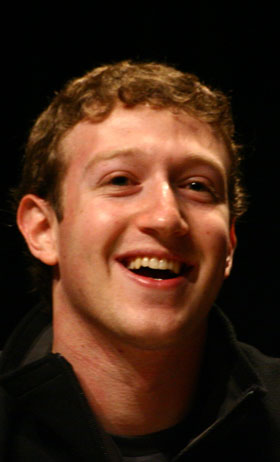 It emerged this week, in an article in the Wall Street Journal, that Snapchat, a Californian start-up that develops a smartphone app of the same name popular among teens, recently spurned a US$3bn-plus all-cash offer from Facebook to buy it out. The offer value was at least three times the already eye-watering $1bn Facebook paid in 2012 to buy photo-sharing service Instagram.
It emerged this week, in an article in the Wall Street Journal, that Snapchat, a Californian start-up that develops a smartphone app of the same name popular among teens, recently spurned a US$3bn-plus all-cash offer from Facebook to buy it out. The offer value was at least three times the already eye-watering $1bn Facebook paid in 2012 to buy photo-sharing service Instagram.
According to the newspaper, Facebook’s offer to Snapchat — and the subsequent rejection of it — comes as speculation mounts that Tencent, the Chinese Internet giant in which South Africa’s Naspers owns a one-third stake, is about to lead a new round of funding that will value the two-year-old start-up, which is led by a 23-year-old, Evan Spiegel, at $4bn. Spiegel is reportedly holding out for a larger offer and won’t consider any approaches until next year.
Has the world gone mad? Could it be that another dot-com bubble is inflating just 13 years after the last one ended, sending stock markets around the world into a tailspin? Or are valuations like these justified in a world where people’s social lives increasingly involve staring at their smartphone screens?
At the very least, the valuations being attached to social media companies — and to some technology stocks more broadly — look demanding.
Let’s take a closer look at Snapchat. The company, started by Stanford University students in 2011, is hugely popular among teens. It allows its users to send messages — including text and pictures — that disappear within seconds of being read by the recipient. It appeals to youngsters because it (supposedly) leaves no long-lasting digital footprint. It has also attracted controversy because it’s become a popular platform for “sexting”, or sharing sexually explicit messages or images.
Clues as to why Facebook would be prepared to pay $3bn for a company that has not made a cent in revenue can probably be found in its third quarter earnings announcement two weeks ago. Facebook warned it was seeing a “decrease in daily users, specifically among teens”. That must be troubling for Facebook CEO Mark Zuckerberg, since it’s teenagers who often point the way to the next big thing in social networking.

News of Facebook’s offer to Snapchat comes just a week after Twitter’s bubbly debut on the New York Stock Exchange in which the popular social network – which has yet to figure out a proper business model — briefly topped $50/share, well above the initial public offering price of $26. By midweek this week, it had settled down in the $40-$42 range, giving the loss-making company a market value firmly above $20bn.
Facebook’s poorly managed stock market debut in 2012, where the share traded well below the offer price for more than a year, appears largely forgotten as the share touches fresh record highs week after week. Its market capitalisation is now nearly $120bn, or about the same as that of giant chip maker Intel.
LinkedIn, whose subscription model looks more durable than the advertising model favoured by other social networks, has also had a storming year on the stock market. In the past 12 months, the counter has added more than 130% for a market value of $25bn.
Part of the strong performance by these companies must be attributed to the generally bullish mood among investors, despite the still-sluggish global economy. And investors are once again pouring money into technology companies, with even Microsoft, whose share price has gone nowhere for the past decade, hitting levels last seen during the dot-com bubble.
The market capitalisation of Google, the world’s largest Internet company, has meanwhile climbed to nearly $350bn. Google is now the third most valuable company in the US, behind only Apple and ExxonMobil. It’s trading at a demanding multiple of 30 times trailing earnings, or 20 times forecast 2014 full-year earnings.
But at least Google has a history of delivering profits. The same can’t be said of Twitter. And the same certainly can’t be said of Instagram or Snapchat. Some say a “land grab” is underway, that the focus for now must be on attracting as many users as possible, and that earnings will follow later.
Wait, was that not the mantra in the late 1990s, too?
- Duncan McLeod is editor of TechCentral. Engage with him on Twitter
- This column was first published in the Sunday Times




